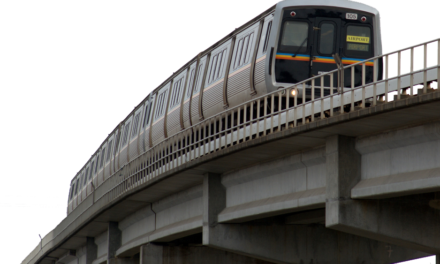While Emory University’s campus can feel like a bubble, events like the bus crash that injured a woman in Woodruff Circle last Tuesday are stark reminders that we are victims of Atlanta’s bus-based infrastructure. Atlanta’s transportation woes are well-known at this point: Its history of promoting urban sprawl and car culture makes it incredibly difficult for the city to effectively implement public transport, such as trains. Public transportation in Atlanta is simply inconvenient. Not to mention, car culture is terrible for the environment. Thus, the population that uses Atlanta’s public transportation is primarily dependent on a limited bus system that can be dangerous and unreliable. Emory’s system may be no better given this recent accident.
While the issue of Atlanta’s transportation infrastructure extends far beyond Emory, the University should take more steps to ensure that its students can commute to school in a secure and eco-friendly way. Emory advertises its Bicycle Commuter program, which offers incentives for graduate students and employees who bike to campus instead of driving. These incentives include one 20-trip MARTA Breeze card per semester and commute backup options, such as a free campus parking spot, on days when the weather does not permit commuting by bike. Extending this program to undergraduates could effectively raise students’ quality of life while giving the nearly 40% of students who live off campus the opportunity to proportionally lower transportation emissions— a key step in climate action.
However, Emory lacks the bike infrastructure and safety methods necessary to fully facilitate the expansion of this program. A 2015 Georgia Department of Transportation audit reported that the area enclosing most of Emory’s main campus between Ponce De Leon Avenue NE, Scott Boulevard, Briarcliff Road and Clairmont Road was a major driving corridor with a high volume of traffic endangering pedestrians and bikers. To make the area more friendly to alternative means of transportation, like walking and biking, the audit suggested the extension of sidewalks and the installation of crosswalks and bike paths, among other revisions.
The audit’s suggestions are tangible actions Emory can implement to encourage the use of its Bicycle Commuter program despite being situated in what is generally a bike-hostile part of the city. Of course, Emory is not responsible for making all the changes in and around the area, but they can do their best to make living in and around their campus safe. By lobbying and working with the city to implement protected bike lanes, pave deteriorating shoulders and slow speed limits, Emory can invest in bike safety and infrastructure on campus. In conjunction, Emory Transportation and Parking Services needs to expand its bike fleet to meet existing student demands for bike rentals and collaborate with local bike-share initiatives to improve bike accessibility around Emory’s campus.
Despite previous efforts like increases in the number of vehicles for programs like Saferide, increase in service between the Atlanta campus and Oxford College as well as extension of service times in key routes the shuttle system direly needs an update. Frequent grievances with the system include shuttles being regularly unreliable, routes running with a limited range of hours and stops, in addition to inaccuracies in route-tracking apps like TransLoc and Passio GO! Contrastingly, the Georgia Institute of Technology’s campus transportation includes a wider range of electric-hybrid routes for students, including direct weekly and weekend routes with connections to MARTA stations along with a timely system of tracking its shuttles. Emory should emulate its peer institution’s system by offering convenient routes that connect students to the city and updating its dated tracking technology.
At Emory students, transportation is our way out of the “Emory Bubble.” We remain tourists in our city when we are constrained by the limits of a transit desert in a moto-cracy. Despite these immovable barriers, we must continue to demand more out of our transportation system, including greater safety and mobility.
The above editorial represents the majority opinion of the Wheel’s Editorial Board. The Board is composed of Marc Goedemans, Sophia Hoar, Carson Kindred, Justin Leach, Eliana Liporace, Lola McGuire, Saanvi Nayar, Sahana Nellian, Sara Pérez, Maddy Prucha, Jaanaki Radhakrishnan and Ilka Tona.
The Editorial Board is the official voice of the Emory Wheel and is editorially separate from the Wheel's board of editors.





